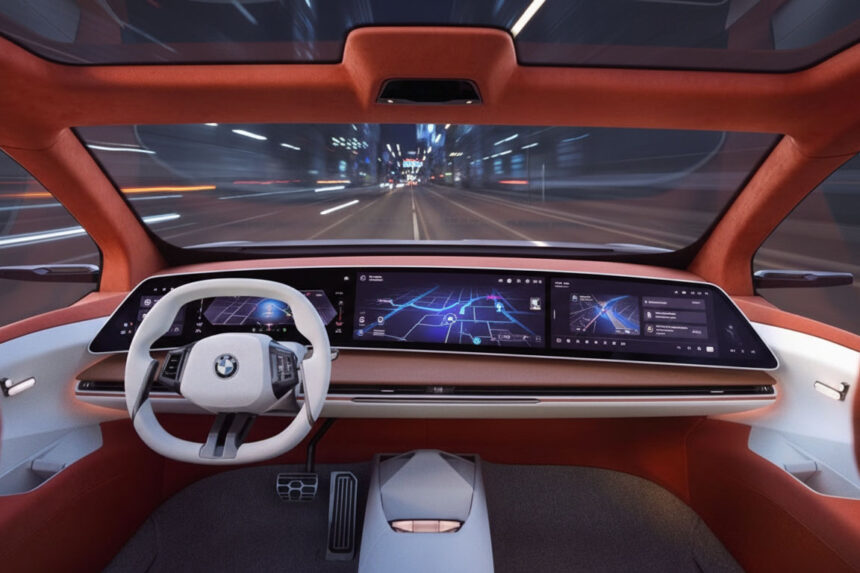Driving used to be all about getting from one place to another, but let’s be honest—using traditional infotainment systems can feel frustrating. Unintuitive controls, outmoded interfaces, and limited functionality make drivers wish for more intelligent, less complex tech that would make road trips more enjoyable and less distracting.
The good news is that artificial intelligence is transforming all those things. AI-powered infotainment in vehicles makes it more interconnected, smarter, and safer than ever. From personalized music recommendations to real-time traffic alerts, these systems will make driving easier and more engaging. They also minimize distractions using voice recognition and data-driven suggestions for a more personalized touch.
Today, we will break down how AI is transforming the driving experience, showing you the real possibilities of smarter car technology. Keep reading to see what’s already here—and what’s coming next.
Historical Context
At the time when Apple CarPlay and Android Auto came out over a decade ago, they went viral. The reason was simple. They worked. Instead of forcing drivers to learn a new, clunky interface for every car, they replicated the smartphone experience everyone already knew. They utilized your phone data plan, which was automatically updated with new applications and did not need an additional subscription. It was a smooth ride that made in-car technology look contemporary and user-friendly.
Automakers jumped on board. What began as a convenient aspect quickly turned into the industry standard. By 2023, installation rates for CarPlay and Android Auto in new vehicles soared above 90%. Some reports even claimed that 98% of all new cars sold in the U.S. came with support for one of the two platforms. Such massive usage made phone projection a must-have for new car buyers.
But did you know? The very success of these platforms was rooted in a market failure by the automakers themselves. They had, unwittingly, taught a whole generation of drivers that the expensive built-in car screen was just a dumb terminal to the highly endowed computer they had in their pocket. In doing so, they surrendered the most valuable digital real estate inside the vehicle to third-party tech companies. It was not a partnership, but a silent surrender that gave Apple and Google the user experience, the data stream and possible future revenues. This created the very problem that automakers are now scrambling to solve.
Automakers’ Transition
The shift started quietly with new, tech-focused car companies. Automakers like Tesla and Rivian built their vehicles from the ground up with proprietary software, never integrating CarPlay or Android Auto in the first place. They bet that a deeply integrated, in-house system could offer a better experience. Now, legacy automakers are following their lead.
➜ General Motors (GM) Case Study
General Motors is making the biggest and most controversial move. The company announced it will phase out Apple CarPlay and Android Auto from its new electric vehicles, starting with models like the Chevrolet Blazer EV. This isn’t just an EV-only strategy. GM CEO Mary Barra has confirmed the plan is to eventually remove phone projection from all future vehicles, as it rolls out a new centralized computing platform around 2028, starting with the Cadillac ESCALADE IQ.
GM’s public reasoning points to safety and a better user experience. Barra mentioned that customers complained about “clunky transitions” when switching between CarPlay and the car’s native controls. The company believes that a single, integrated system can be smoother and less distracting. But the bigger motivation lies in something far more valuable.
➜ Other Automakers
While GM is leading the charge among traditional automakers, the trend of prioritizing proprietary AI-based vehicle systems has been visible for some time. Tesla and Rivian serve as the primary examples of success in this area. Right at the beginning, they decided to come up with their own software stacks internally. This enabled them to manage the entire user experience and use vehicle data in a way that cannot be done when surrendering the interface to a third party. Their success has also served as a proof-of-concept to legacy brands. It simply shows that a customer will adopt a native system as long as it is designed well and powerful.
Data Utilization and Control
The main reason automakers are ditching these popular platforms is data. When you plug in your phone and use CarPlay or Android Auto to navigate, stream music, or make a call, all the valuable data about your habits and preferences goes primarily to Apple and Google, not the car company.
This leaves automakers in the dark. As Andrew Hart, CEO of the analyst firm SBD, explained, car companies “don’t know how you are using their infotainment system,” which “starves” them of the intelligence needed to improve their products. By taking back control of the infotainment system, automakers can finally see how drivers interact with their vehicles. They want this data not necessarily to sell it—a strategy that has largely failed and even led to privacy scandals—but to better understand their customers. The goal is to use this information to build better cars, refine features, improve customer service, and ultimately, keep you coming back for your next vehicle.
Collaborations with Tech Giants
It’s important to understand that GM isn’t breaking up with Google entirely. They are just changing the nature of the relationship. While GM is abandoning Android Auto (the phone projection app), it is building its new advanced vehicle infotainment technology on Android Automotive, a full operating system developed by Google that runs natively on the car’s hardware.
This partnership gives GM a powerful and mature software foundation to build upon. The new system comes with Google Maps, Google Assistant, and a built-in Google Play Store so users can download apps directly to the car. This is a strategic compromise. GM gets the deep vehicle integration and data control it wants, without having to build a complex operating system from scratch. It is a step followed by other brands such as Volvo, Ford, and Nissan, which marks a new era of cooperation between car manufacturers and technology firms.
Advantages of Proprietary Systems
The promise of a native, integrated system is that it can do things phone projection simply can’t. By tightly integrating software into the vehicle’s hardware, automakers can offer unique, superior experiences.
One of GM’s showcase features is the integration of Dolby Atmos on Amazon Music. This immersive 3D audio system is specifically designed to fit the car’s unique speaker arrangement and cabin acoustic conditions. A generic system, such as CarPlay, can never reach this amount of hardware customization.
For electric vehicles, the benefits are even more critical. A native system can perform intelligent EV routing by accessing the car’s real-time battery status, range, and the availability of nearby charging stations. It can plan the most efficient route and even precondition the battery as you approach a charger to ensure the fastest possible charging speed—a feature that is beyond the reach of phone-based navigation apps.
Furthermore, GM is integrating its hands-free driving system directly with the built-in Google Maps. The system can show you which roads are compatible with Super Cruise and how much of your trip can be driven hands-free, creating a seamless link between navigation and advanced driver-assistance features.
Implications for the Industry
GM phasing out CarPlay and Android Auto is a high-stakes gamble. Consumer backlash has been tremendous. A McKinsey & Company report found that nearly half of car buyers would refuse to purchase a vehicle that didn’t have CarPlay functionality. By eliminating a feature that many consumers currently believe is necessary, the auto manufacturers will lose a significant segment of the market.
However, if GM succeeds, the ripple effect could be massive. If the company can prove that its native system offers a genuinely better, more integrated experience, other legacy automakers will likely follow suit. The key will be execution. After a decade of producing subpar software, automakers have to overcome a mountain of consumer skepticism. They must deliver an experience that isn’t just as good as CarPlay, but demonstrably better.
Conclusion
With a new move toward AI-powered infotainment in vehicles, every road trip will now be safer, smarter, and even more enjoyable. From voice recognition to personalized recommendations, the possibilities are endless and growing fast. As this technology continues to grow, it’s exciting to think about how our cars will interact with us in even more natural and intuitive ways. If this article sparked interest, share it with someone who loves innovation—let’s keep the conversation going and explore the road ahead together!
FAQs
What is the infotainment system in a car?
An infotainment system in a car is the integrated technology that combines entertainment and information features, such as music, navigation, and phone connectivity. These systems usually mount on a central screen and are more convenient to drive, as they can offer touchscreen or voice controls, navigate menus, and perform functions without issues.
What is a touch screen infotainment system?
A touchscreen infotainment system is an in-car interface that enables direct interaction with the screen to control entertainment and driving information features, such as navigation, streaming services, and vehicle settings. These systems enhance usability and give drivers familiar controls as with smartphones, through a high-resolution display.
What is conversational AI in cars?
Conversational AI in cars can be described as smart voice-based or text-based machines that are built into vehicles. It helps the drivers to comprehend, anticipate, and customize responses for tasks such as navigation, maintenance warnings, and real-time driving purposes.
—
Author: Maverick Steel is a writer and digital marketer who enjoys connecting the dots for strategy and engaging content. He spent 6 years in secondary education as a proud campus journalist, specializing in editorial and column writing. Holding a bachelor’s degree in Marketing Management, Maverick is also a devoted advocate for positive cyber citizenship and a certified pet lover. When he’s not busy writing, you can catch him hitting the gym or enjoying a matcha latte at the nearest aesthetic coffee shop.









